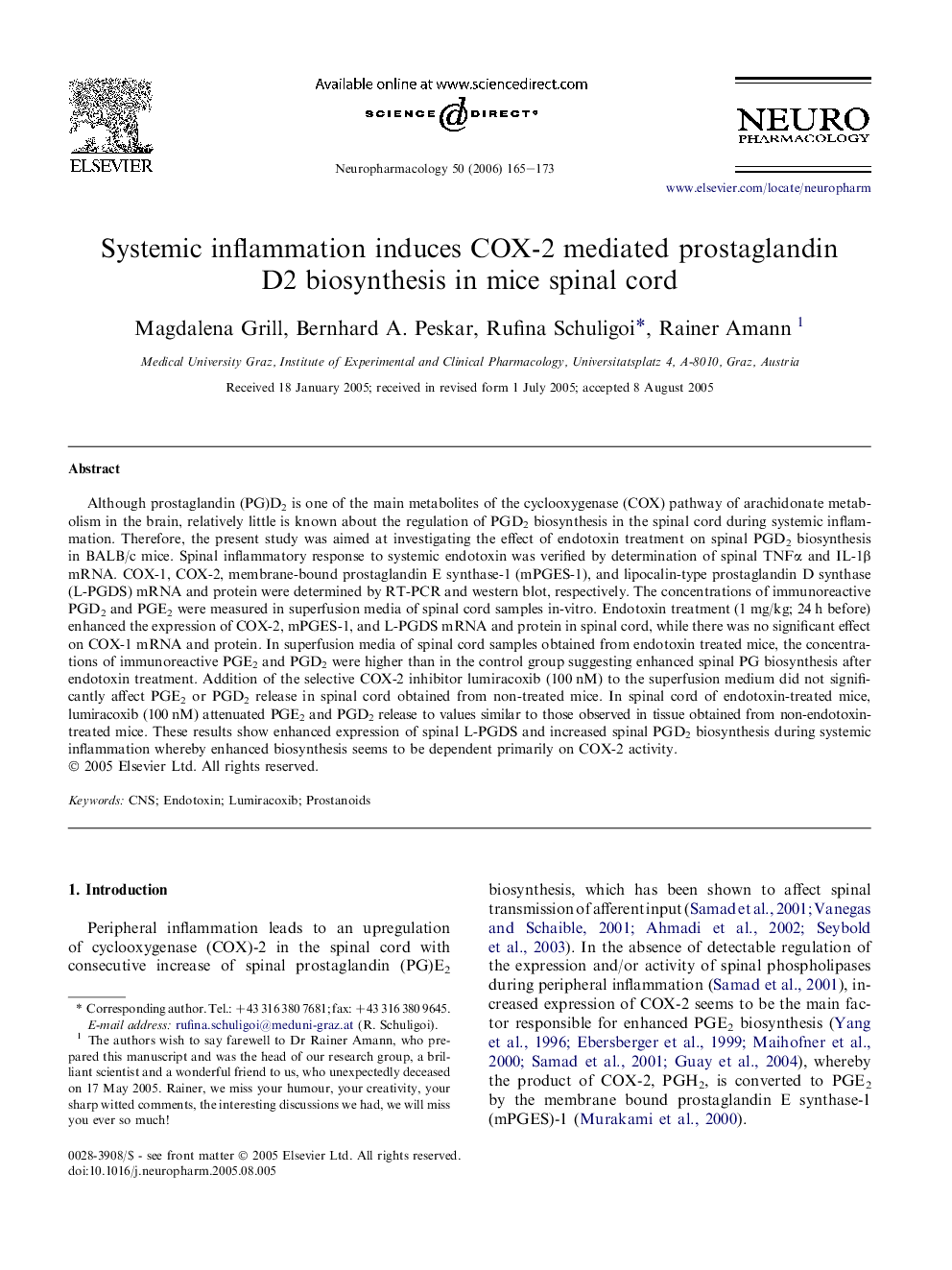| Article ID | Journal | Published Year | Pages | File Type |
|---|---|---|---|---|
| 2495439 | Neuropharmacology | 2006 | 9 Pages |
Although prostaglandin (PG)D2 is one of the main metabolites of the cyclooxygenase (COX) pathway of arachidonate metabolism in the brain, relatively little is known about the regulation of PGD2 biosynthesis in the spinal cord during systemic inflammation. Therefore, the present study was aimed at investigating the effect of endotoxin treatment on spinal PGD2 biosynthesis in BALB/c mice. Spinal inflammatory response to systemic endotoxin was verified by determination of spinal TNFα and IL-1β mRNA. COX-1, COX-2, membrane-bound prostaglandin E synthase-1 (mPGES-1), and lipocalin-type prostaglandin D synthase (L-PGDS) mRNA and protein were determined by RT-PCR and western blot, respectively. The concentrations of immunoreactive PGD2 and PGE2 were measured in superfusion media of spinal cord samples in-vitro. Endotoxin treatment (1 mg/kg; 24 h before) enhanced the expression of COX-2, mPGES-1, and L-PGDS mRNA and protein in spinal cord, while there was no significant effect on COX-1 mRNA and protein. In superfusion media of spinal cord samples obtained from endotoxin treated mice, the concentrations of immunoreactive PGE2 and PGD2 were higher than in the control group suggesting enhanced spinal PG biosynthesis after endotoxin treatment. Addition of the selective COX-2 inhibitor lumiracoxib (100 nM) to the superfusion medium did not significantly affect PGE2 or PGD2 release in spinal cord obtained from non-treated mice. In spinal cord of endotoxin-treated mice, lumiracoxib (100 nM) attenuated PGE2 and PGD2 release to values similar to those observed in tissue obtained from non-endotoxin-treated mice. These results show enhanced expression of spinal L-PGDS and increased spinal PGD2 biosynthesis during systemic inflammation whereby enhanced biosynthesis seems to be dependent primarily on COX-2 activity.
